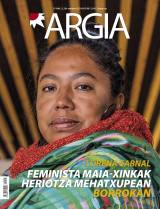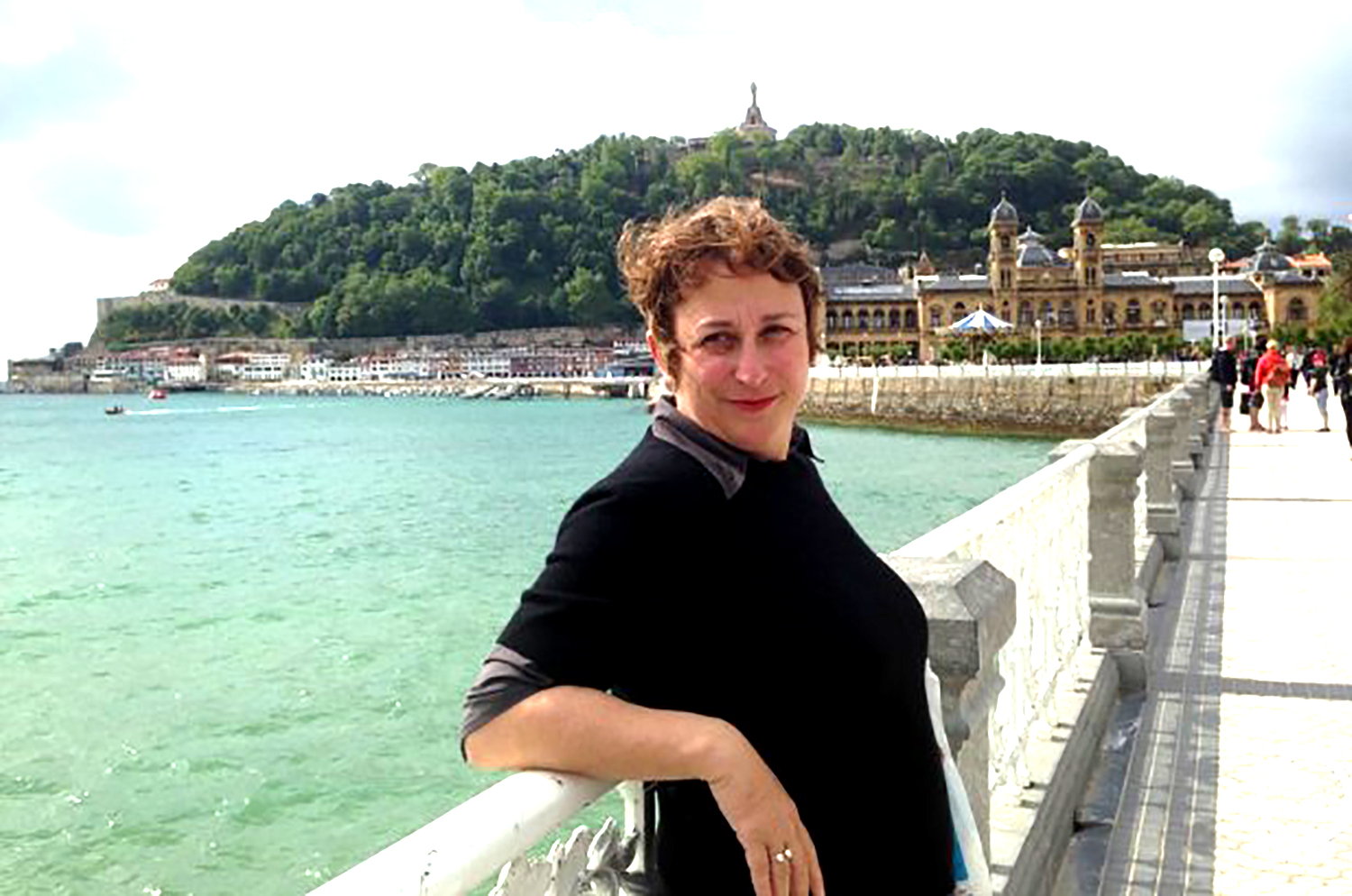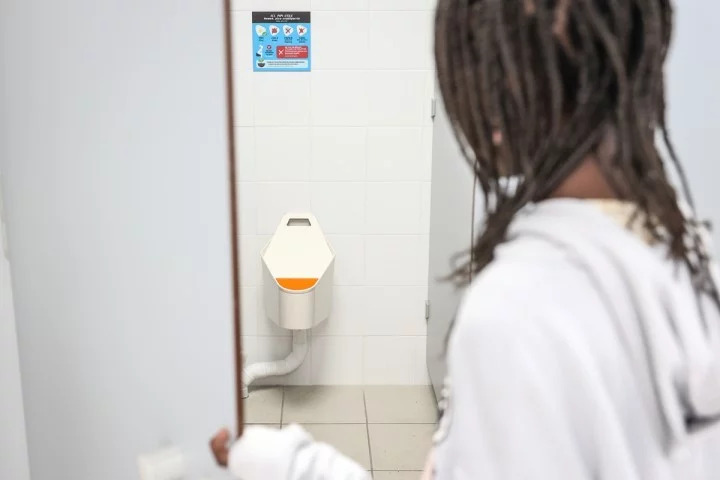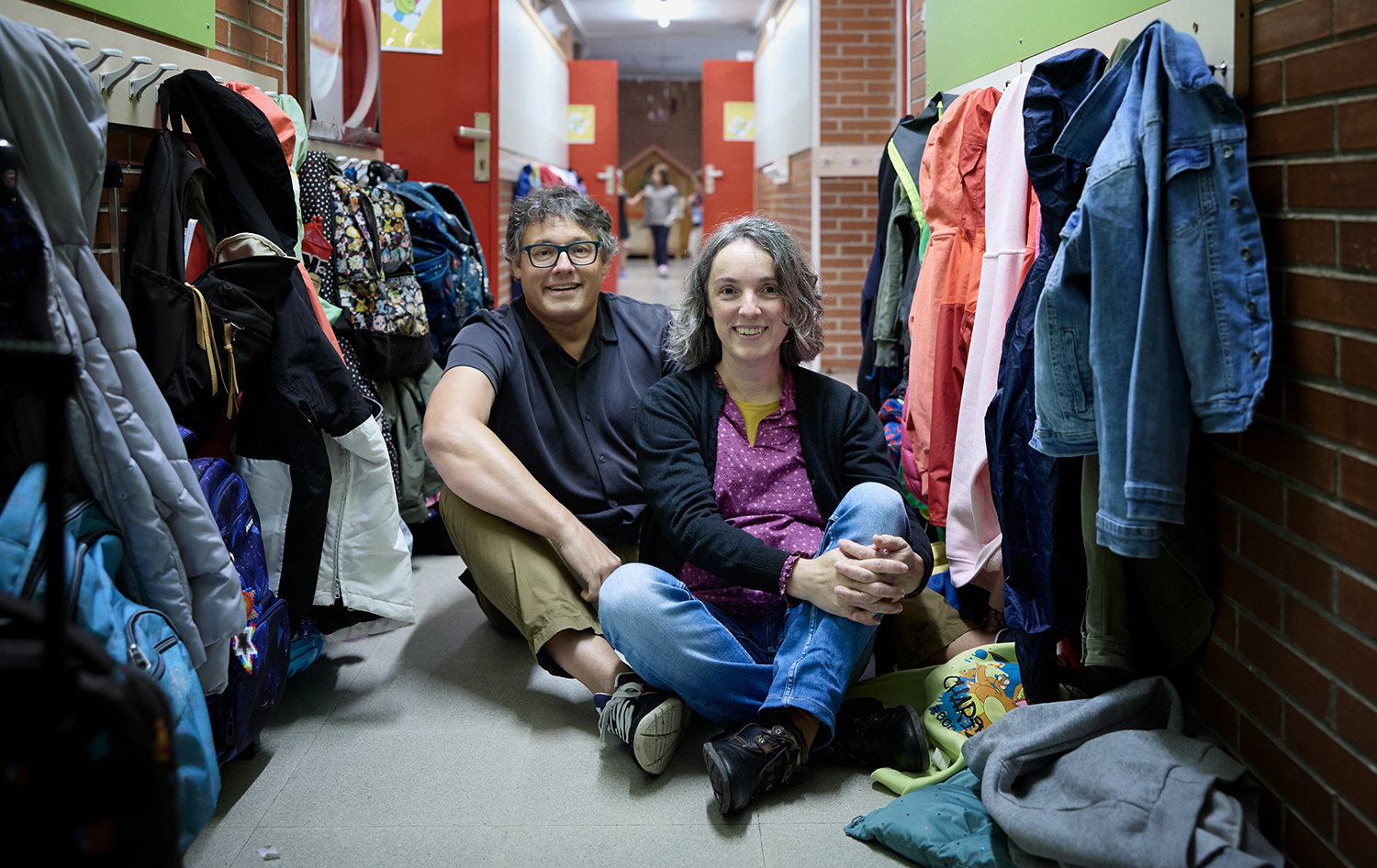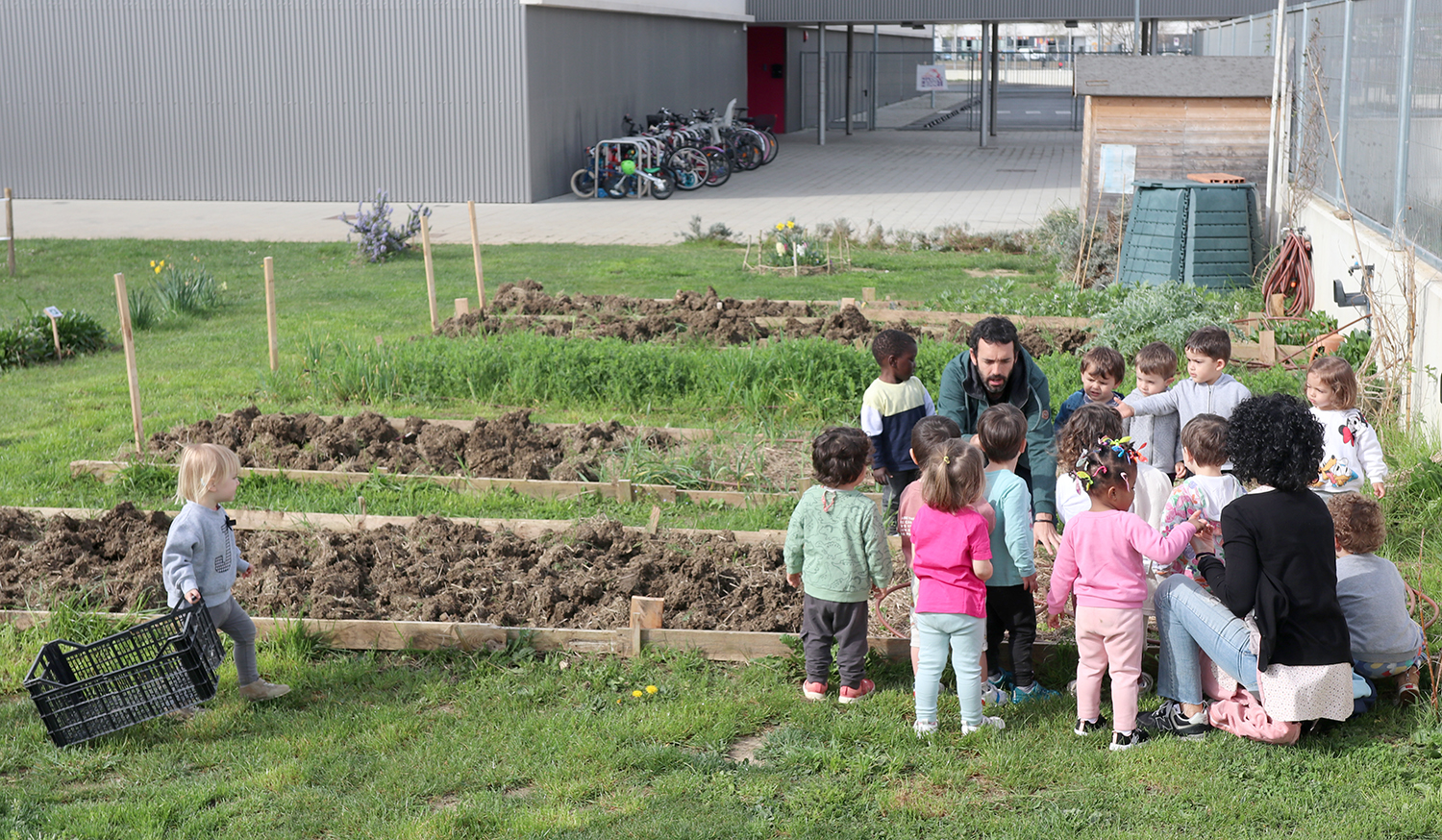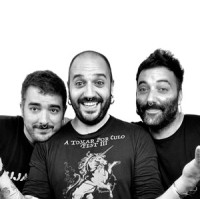How to bring all kinds of intelligence into play
- Gardner describes eight types of intelligence. Each person has a number of more developed types of intelligence and with them they more easily internalize the lessons. On the contrary, in schools it is common for all students to give explanations almost entirely through texts and numbers. At the Hirukide de Tolosa school, the subjects are dealt with with with nine games of intelligence. We have come to know this methodology from practice and have been guided by the director Pello Agirrezabal and the director Txaro Etxeberria: “We talk only about what we do. We are not theorists, but our school, we know that very well.”
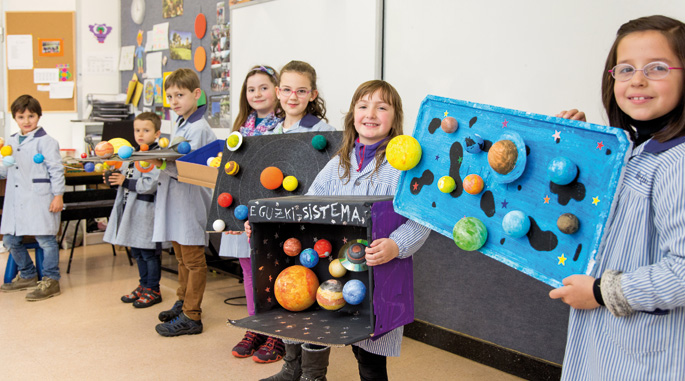
Hirukide began his career 13 years ago with the union of three schools. It belongs to the network of Christian Schools. They wanted to create a strong educational project, which will serve to respond to the challenges that we are going to have in this century. So 12 years ago, they started with emotional intelligence. “Emotional intelligence is the basis and the key to all of this. The education of feelings and emotions”, emphasizes Etxeberria. They also created a comprehensive program to work emotional intelligence with students aged 3 to 12 years and in 2008 it was published by the Provincial Council of Gipuzkoa and distributed to all schools in the territory.
The next step was to work on positive coexistence. Etxeberria makes it clear: “We know that conflicts will always have them. If we believe that in schools we have to teach life skills, learn how to solve conflicts properly, that is, in a peaceful and dialogical way, it is very important.”
The third leg of the educational project was put seven years ago: cooperative learning.
Finally, four years ago, the roof was lifted over these three pillars: the paradigm of multiple intelligences. To this end, Etxeberria has explained that the systematization of the three bases is key: “Getting anything going is very easy if you have a little illusion and involvement. But the other thing is that this really works and it's not a vase in an org chart. We have to take great care of these bases every year, not just at the beginning. They ask for a lot of work, but the result is impressive.”
So the school is really for everyone.
Agirrezabal explains why they supported the paradigm of multiple intelligences: “All schools talk about an inclusive school: that in school we all have room and participation. If we want to achieve the presence and prominence of all students, we cannot continue to take account solely – or mostly – of logical, mathematical and linguistic intelligence. Thus, there are students who are excluded from this system. Although they have other qualities, they are not made room in school. One of the goals of multiple intelligences is to unite the strength of these students. And that we all realize that these forces can be trained, too.” Etxeberria continues with the work of intelligences: “All people are different and each one has its origin minds more developed, and with that it has come to life. Much more effective than focusing on the deficiencies of linguistic and mathematical intelligences is identifying the intelligences in which each student is more skillful. The aim is not only to develop the intelligences that are their strength, but to develop the other intelligences from them. Not all intelligences will be developed to the same extent, but each of them to the minimum extent necessary for life. And the strengths do have to be really developed to get ahead in life.”
Understanding projects and others
How do you do it to activate all kinds of intelligence around the issue that's being worked on? According to Etxeberria, among others, they use understanding projects: “It’s not about learning a concept. All of this is already on the Internet. It’s about appropriating some things.” He has set as an example the theme of the universe: “The goal is not to know how many planets are there and what their name is, but what forces are operating, how the universe works. Why we keep standing here.” Every child will come to internalize these concepts in different ways. “When it comes to organizing the theme, we teachers must prepare activities, exercises... that put different intelligences into play. One more student will come through a choreography or singing a bertso, another student looking at a scheme... We have to program everything.” Sometimes, all students will do all the exercises, although each one of them will be more assisted by a type of exercise. On other occasions, a methodology called learning landscapes will be designed: the teacher draws different paths to reach the same goal through different activities and exercises, and the student makes options. Returning to the example of the universe, students can read a text about the universe (that would be linguistic intelligence), but they can also go to the courtyard, where one student can sit in the middle of the sun and the other circling the planet (working kinesic intelligence). “So children can understand that the farthest planet is spending more time turning around. Another will better assimilate it through music...” Etxeberria concluded.
For teachers, the toolbox created by the Montserrat College is very useful to prepare the work for each intelligence. Not in vain, Montserrat in Barcelona is one of the main references in the elaboration of diverse intelligences. The teacher will find in the toolbox the exercises and dynamics that can be performed by each intelligence. “We tend to cultivate linguistic intelligence exclusively through reading texts. But another option is to recite poetry, make a bertso, tell jokes ... The toolbox is very good, because in addition to providing resources to the teachers, it helps us to open our heads.”
People who will change society
Agirrezabal points out the center's objective: “We want to create people who are able to transform society into the future. To do so, we have to be trained to transform.” It explains some of the initiatives carried out to work social transformation: “For example, those in the third cycle detected what they would like to change: the setting of a grocery store next to the school was completely dirty and they developed a project to change it. They also had to go to other centres to extend their intentions. They contacted the City Hall and it financed the stickers. On a Sunday they were cleaning the street to raise awareness of the garbage that was produced...”. Etxeberria added that, as they learn, they seek to provide a service to society: “For example, from the 3rd EP they can use the mediation service for those who are not able to perform on their own. The mediator (6th and 6th of EP) does not have to solve their problem, but to help build the communication between the two. For this, there is a complete methodology and mediators receive 16 hours of training”.
As far as services are concerned, two students have entered the director's room with a joyful voice because a photographer is going to publish his exhibition in a magazine. Agirrezabal explains: “They themselves proposed that they wanted to make an exhibition with their drawings. It's visible in the hallway for a week, and at recess for a quarter of an hour and after class for a quarter of an hour, they have to be there and give explanations."
We've been told that to get out of the walls of the education classroom, you don't need expensive design buildings, as you walk between the students who walk four legs down the hallway and get down the stairs converted into vertical vegetable gardens to the door: “We use all spaces except the roof. If we don’t use imagination, how are we going to ask the students?”
Howard Gardnerrek 8 adimen deskribatu zituen. Egun, adimen gehiagoz ere ez hitz egiten da (jarraian zerrendatutakoez gain, pedagogikoaz eta digitalaz, esaterako). [Gardnerrez eta bere teoriaz jakiteko, Hik Hasi aldizkariko 51. eta 52. aleetara jotzea gomendatzen dizugu].
-Hizkuntzetarakoa: Ideiak eta sentimenduak ahoz eta idatziz adierazteko gaitasuna. Hizkuntzaren bidez komunikatzeko eta informazioa lortzeko gaitasuna.
-Musikala: Musika formak hauteman, bereizi, eraldatu eta adierazteko gaitasuna. Erritmoak, tonuak, melodiak... antzeman eta erabiltzeko trebetasuna.
-Ikus-espaziala: Irudien bidez pentsatzeko eta ideiak grafikoki jartzeko trebezia, sistema sinbolikoak erabiliz. Espazio antolakuntza irudikatzeko eta eraldatzeko gaitasuna.
-Naturarekikoa: Natur mundua, bizia, landareak, animaliak... ulertzeko trebezia. Behaketak, hipotesiak, sailkapenak, ondorioak... erabiltzeko gaitasuna. Ingurugiroa zaintzearen garrantzia ulertzeko gaitasuna.
-Pertsonen artekoa: Besteak ulertzeko eta beraiekin elkarreragiteko gaitasuna. Pertsonen nahiak, asmoak, motibazioak... antzemateko eta ulertzeko gaitasuna. Lankidetzan aritzeko trebetasuna.
-Norberarekikoa: Nork bere burua, bere indarrak eta ahuleziak ulertzeko gaitasuna. Barneko sentimenduak, pentsamenduak... antzemateko, hausnartzeko eta kudeatzeko trebetasuna.
-Kinesikoa: Gorputzaren bidez ideiak eta sentimenduak adierazteko gaitasuna. Gorputza eta zentzu-organoen bidez informazioa jasotzeko trebezia.
-Logiko-matematikoa: Operazio matematikoak, problemak, hipotesiak, ondorioak, argudioak... prozesatzeko trebetasuna. Pentsamendu logikoa erabiliz, patroi abstraktu eta konplexuen arteko harremanak antzemateko gaitasuna.
Hirukide ikastetxean adimen espirituala ere lantzen dute (batzuek transzendentala edo existentziala deitua). Etxeberriak zehaztu duenez, “ez da erlijio kontua. Berdin dio ikasle batek erlijio bat edo bestea praktikatzen duen, edo batere ez. Adimen espiritual hori denok daukagu. Bizitzaren aurrean planteatzen ditugun galderak dira: zer egiten dut nik hemen? Zertarako jaio gara? Zer gertatzen da heriotzaren ondoren? Bakoitzak emango dio bere erantzuna”. Agirrezabalek zera gehitu du: “Adimen transzendentalarekin lotua dago, baita ere, eguneroko hainbat momentutan gozatzeko gai izatea eta gozamen horretaz jabetzea. Esaterako, artelan baten aurrean jarri, gainerakotik deskonektatu eta miretsita egoteko gai izatea”.
In the current educational system, we must rethink the school paradigm. Discard the traditional approach based on penal measures and question the effectiveness and ethics of some practices used for a long time as an instrument to maintain the order and discipline of students:... [+]









